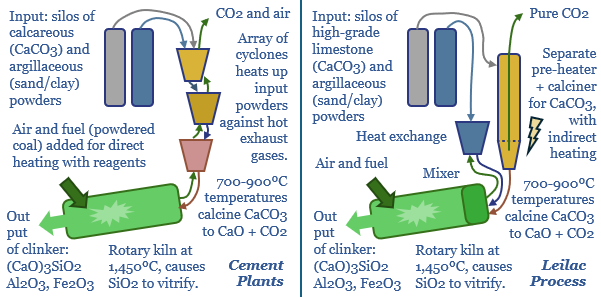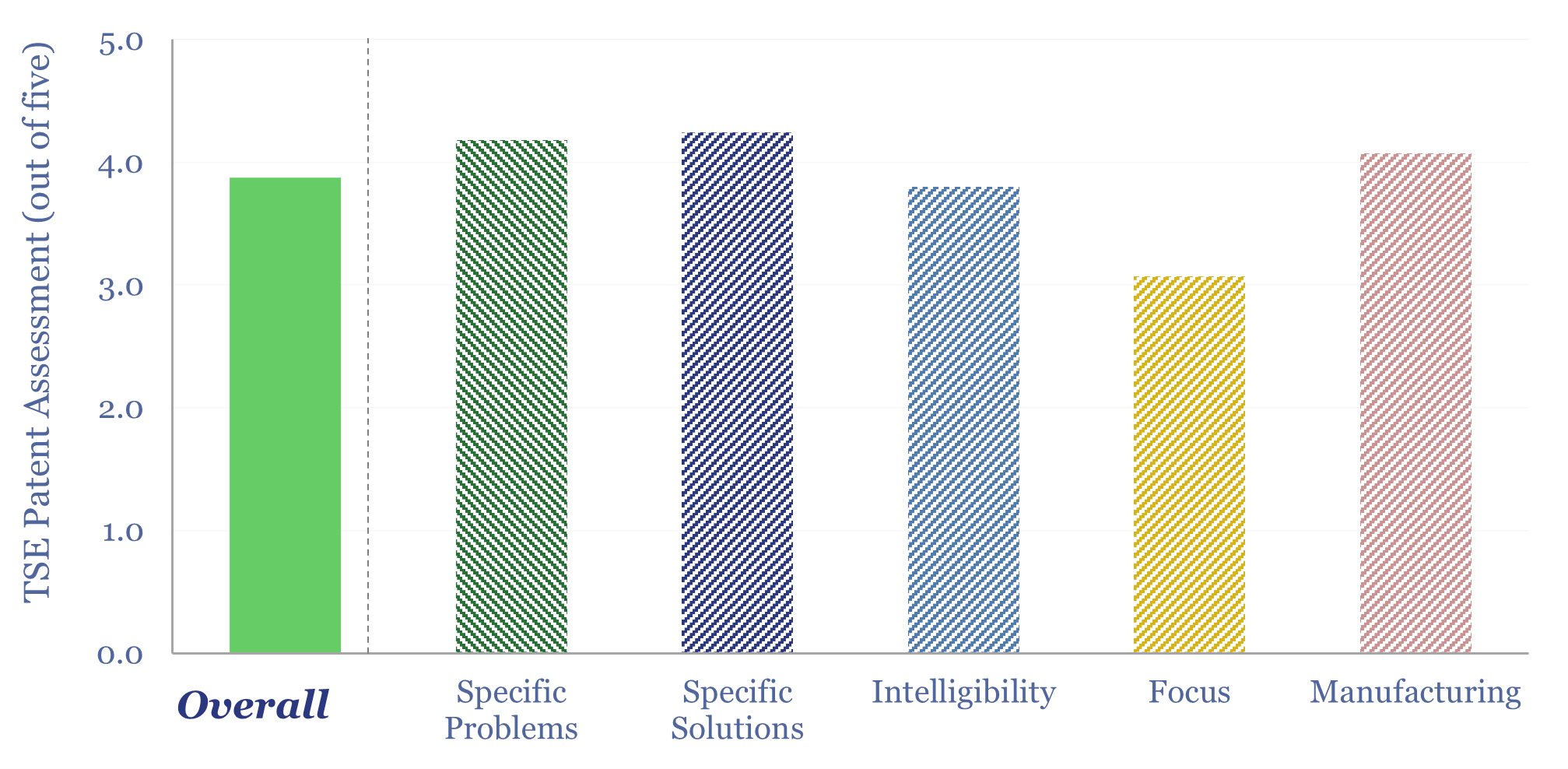This data-file explores Leilac low-carbon cement technology, which separates the calcination stage, within an indirectly heated reactor, so that 98% pure CO2 can be gathered and sequestered, without requiring post-combustion CCS (amines). Patents from parent company, Calix, lock up the technology, with clear and intelligible details, although this also shows where the challenges are.
Leilac was founded in 2014, has over 100 employees, and its operations have mainly been focused in Lixhe, Belgium, where Heidelberg has piloted its technology for low-carbon cement production from 2016-21.
The Leilac-2 project will follow, applying the technology at a larger scale, to capture 100kTpa, or 20% of the emissions from Heidelberg’s Ennigerloh cement plant in Hanover, Germany. Commissioning is scheduled for 2026.
Leilac aims to decarbonize cement, with CO2 abatement costs ultimately as low as €20/ton, via a new kiln design, which directly calcines CaCO3 into CaO (lime) and 98% pure CO2, with no air ingress or loss of containment; then transfers the hot CaO onwards for reaction with silicates.

Leilac’s parent company, Calix, was founded in 2005, has 155+ employees, is based in New South Wales, listed in Australia, with A$124M of market cap at the time of writing, and a colorful portfolio of patents across multiple sectors.
A related company, Heirloom, is applying a similar technology to DAC.
We have reviewed Calix’s cement-related patents in this data-file, which appear to have been licensed to Leilac. Reviewing the patents allowed us to glean important process parameters for how the Leilac process works.
It also shows where the key challenges are (“lime stickiness”, mixing the hot lime and hot silicates, energy penalties on indirect heating, requiring relatively pure limestone as a feed). But on the other hand, the patents also note other advantages for the process, compared with a typical cement plant’s cyclones.
Overall, this is one of the most interesting technologies we have seen for lower-carbon cement, protected by a strong patent portfolio, although we do think the process will amplify capex costs, and heat use, and thus increase the marginal cost of cement from $130/ton to at least $140/ton, in order to avoid about 0.5 tons/ton of emissions, for a direct CO2 abatement cost over $20/ton, plus the costs of CO2 transport (maybe $10-20/ton) and CO2 disposal (maybe another $10-20/ton).
Deeper decarbonization is possible. The original patents that we reviewed in this data-file mostly used the flameless combustion of natural gas as a heat source. But Calix later said “The LEILAC Technology aims to use any type of heat source”. In 2023/24, the process was described as an electric kiln technology, that “can be directly powered by renewable electricity”. And a technical paper noted “LEILAC electrification substitutes conventional gas burners by electric resistance heating”.
